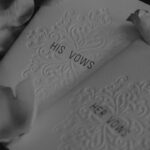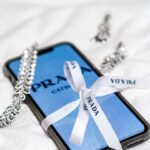Embarking on the journey to find the perfect wedding dress begins with a deep understanding of your personal style. This is not merely about aesthetics; it’s about reflecting your personality and the essence of your relationship. Consider the various elements that resonate with you—are you drawn to classic elegance, bohemian flair, or perhaps modern minimalism?
Each style carries its own unique characteristics, and identifying what speaks to you will guide your choices as you navigate through the myriad of options available. To gain clarity on your style, it can be helpful to create a mood board. Gather images from bridal magazines, Pinterest, or Instagram that showcase dresses, fabrics, and accessories that catch your eye.
Pay attention to recurring themes in your selections; do you favor lace over satin, or do you lean towards intricate beadwork? This visual representation will not only serve as a source of inspiration but also help communicate your vision to bridal consultants and designers. Additionally, consider the setting of your wedding—whether it’s a grand ballroom, a rustic barn, or a beachside ceremony—as this will influence the style of dress that complements the overall ambiance.
Researching Local Bridal Shops
Once you have a clearer understanding of your style, the next step is to research local bridal shops. The landscape of bridal boutiques can vary significantly from one location to another, with some offering a curated selection of designer gowns while others may focus on more affordable options. Start by reading online reviews and testimonials from previous customers to gauge the quality of service and the range of dresses available.
Websites like The Knot and WeddingWire can provide valuable insights into local shops, helping you narrow down your choices. Visiting bridal shops in person is essential for a comprehensive experience. Schedule appointments at a few different boutiques to explore their collections firsthand.
During these visits, pay attention not only to the dresses but also to the atmosphere and customer service. A welcoming environment where consultants are attentive and knowledgeable can make a significant difference in your experience. Don’t hesitate to ask questions about the designers they carry, the price ranges, and any special services they offer, such as alterations or customization options.
This groundwork will set the stage for a more focused and enjoyable dress shopping experience.
Setting a Budget

Establishing a budget is a crucial step in the wedding dress shopping process. With an array of options available at varying price points, having a clear financial plan will help streamline your search and prevent any potential disappointments. Begin by determining how much you are willing to spend on your dress, keeping in mind that this figure should encompass not only the gown itself but also alterations, accessories, and any additional costs such as cleaning or preservation after the wedding.
When setting your budget, consider the overall financial picture of your wedding. Allocate funds for other essential elements such as venue, catering, and photography, ensuring that your dress budget aligns with these priorities. It’s also wise to leave some wiggle room for unexpected expenses that may arise during the planning process.
Once you have established a budget, communicate this figure to bridal consultants during your appointments; they can then guide you towards options that fit within your financial parameters while still allowing you to explore styles that resonate with you.
Trying on Different Silhouettes
The experience of trying on wedding dresses is often filled with excitement and anticipation. As you step into various silhouettes, from A-line to ball gown to sheath, you’ll begin to understand how different styles flatter your body shape and reflect your personal taste. Each silhouette offers its own unique advantages; for instance, an A-line dress is universally flattering and provides comfort, while a mermaid gown accentuates curves in a dramatic fashion.
As you try on different silhouettes, keep an open mind. A style that may not initially appeal to you could surprise you when worn. It’s essential to consider how each dress feels as well as how it looks; comfort is paramount on your wedding day.
Pay attention to how the fabric drapes against your body and whether you can move freely in it. Additionally, don’t shy away from experimenting with different necklines and sleeve styles; these details can significantly alter the overall look of the dress and may lead you to discover something unexpected that resonates with your vision.
Considering Customization Options
In today’s bridal market, customization has become increasingly popular, allowing brides to create a gown that is uniquely theirs. Many bridal shops offer options for altering existing designs or even creating entirely bespoke dresses tailored to individual specifications. This process can involve selecting specific fabrics, adjusting silhouettes, or adding personalized embellishments such as embroidery or beading that reflect your style and story.
When considering customization options, it’s important to communicate openly with your designer or consultant about your vision. Bring along any inspiration images or sketches that illustrate what you have in mind. Be prepared for discussions about timelines and costs associated with customization; bespoke gowns often require additional fittings and may take longer to produce than off-the-rack options.
However, the result can be incredibly rewarding—a one-of-a-kind dress that embodies your personality and makes you feel truly special on your wedding day.
Seeking Advice from Friends and Family

As you navigate the journey of finding your wedding dress, seeking advice from friends and family can provide valuable perspectives and support. Involving loved ones in this process can enhance the experience, turning it into a memorable occasion filled with laughter and shared excitement. However, it’s essential to strike a balance between gathering opinions and staying true to your vision; too many voices can lead to confusion rather than clarity.
When inviting friends or family members to accompany you on dress shopping excursions, choose individuals whose opinions you trust and who understand your style preferences. Their insights can help you see options from different angles and may even highlight aspects you hadn’t considered before. Additionally, their emotional support can be invaluable during fittings and decision-making moments when nerves may run high.
Ultimately, while their input is important, remember that this is your day and your dress; ensure that it reflects who you are above all else.
Scheduling Fittings and Alterations
Once you’ve found the dress that feels like “the one,” scheduling fittings and alterations becomes the next critical step in ensuring a perfect fit. Most bridal shops will include a fitting service as part of the purchase process; however, it’s essential to understand how many fittings are typically required based on the complexity of alterations needed. Generally, brides will need at least two fittings: one for initial adjustments and another closer to the wedding date for final tweaks.
During fittings, be prepared to discuss specific adjustments with your seamstress or tailor. Common alterations include adjusting the hemline for length, taking in or letting out seams for fit, and modifying straps or necklines for comfort and style preferences. It’s advisable to bring along the undergarments and shoes you plan to wear on your wedding day so that alterations can be made with those items in mind.
Keep an open line of communication with your seamstress; they are there to help ensure that your dress fits flawlessly and enhances your natural beauty.
Finalizing Your Dream Bride Dress
The moment when you finalize your wedding dress is often filled with emotion—a culmination of research, fittings, and heartfelt decisions leading up to this significant choice. Before making the final purchase, take a moment to reflect on all aspects of the dress: does it align with your vision? Do you feel confident and beautiful in it?
It’s crucial that every detail resonates with you because this dress will be part of one of the most memorable days of your life. Once you’ve made your decision, ensure all details are confirmed with the bridal shop regarding payment terms, delivery timelines, and any additional services such as cleaning or preservation after the wedding. It’s also wise to ask about return policies or exchange options in case any last-minute changes arise before the big day.
With everything in place, take a deep breath and embrace this exciting milestone; you are one step closer to walking down the aisle in a gown that embodies not just style but also love and commitment.
FAQs
What are some popular styles of bride dresses?
Some popular styles of bride dresses include ball gown, mermaid, A-line, sheath, and tea-length dresses. Each style offers a different silhouette and can cater to different body types and personal preferences.
What are some factors to consider when choosing a bride dress?
When choosing a bride dress, it’s important to consider factors such as body shape, personal style, wedding theme, and budget. It’s also important to consider the fabric, neckline, and overall comfort of the dress.
Where can I find bride dresses near me?
You can find bride dresses near you by visiting bridal boutiques, wedding dress shops, department stores, and online retailers. It’s important to schedule appointments in advance and do some research on the styles and designers you’re interested in.
What is the average cost of a bride dress?
The average cost of a bride dress can vary widely depending on the designer, fabric, and style. However, in the United States, the average cost of a bride dress is around $1,500 to $3,000. It’s important to factor in alterations and accessories when budgeting for a bride dress.
How far in advance should I start looking for a bride dress?
It’s recommended to start looking for a bride dress at least 9-12 months before the wedding date. This allows time for ordering the dress, alterations, and any unexpected delays. However, some brides may find their dress sooner or need more time for a custom design.










